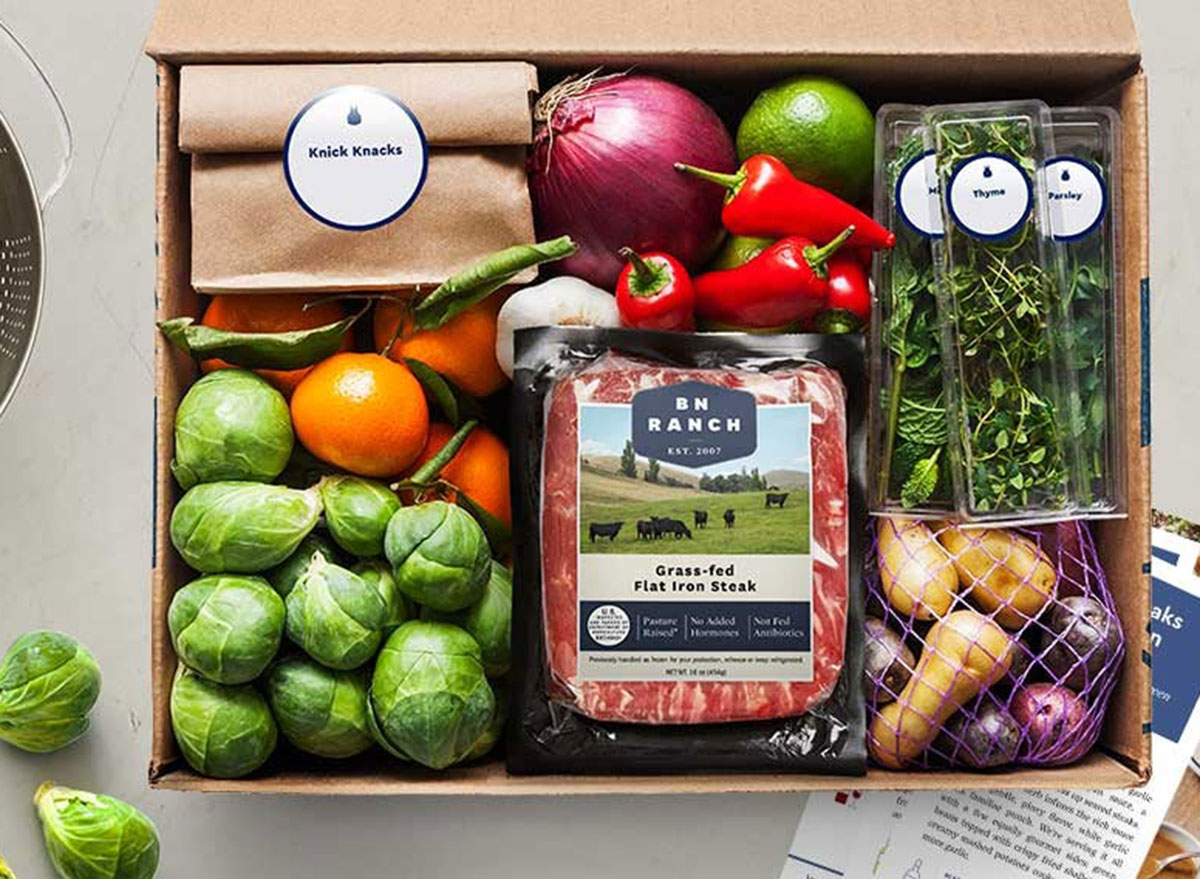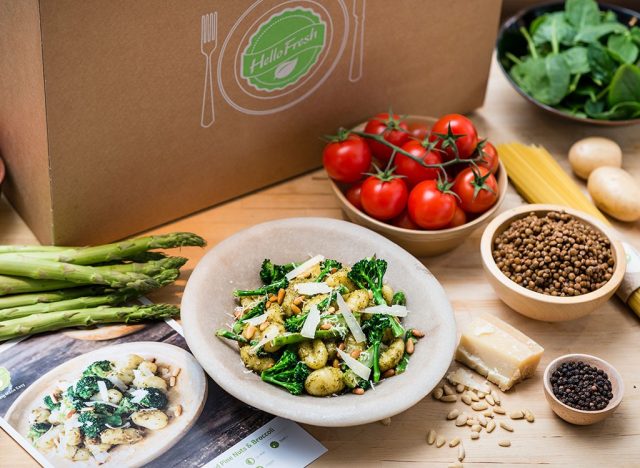The Secret Home Food Delivery Companies Don't Want You To Know

Throughout the COVID-19 pandemic, home food delivery companies have boomed.
In 2021, about two dozen home meal kit delivery businesses together hit $6.9 billion in sales. Continued growth by companies like Blue Apron, Home Chef, Hello Fresh, and a host of other companies' sales will likely top $10 billion by 2024, according to Food Safety News.
New findings from a North Carolina State University study pointed to a need for more accurate monitoring of meal kit temperatures to help ensure food safety. Keep reading to learn more about this danger, and then check out 6 Things You'll See at Costco This Year.

According to the study, the majority of meal kits delivered to consumers contain one or more perishable food items that have been exposed to temperatures above the 40-degree Fahrenheit safety zone which impedes the growth of potentially harmful bacteria.
Researchers found the types and quantities of packaging coolants used significantly impact perishable food safety. Approximately 17% of deliveries using dry ice had at least one item above 40 degrees.
Of deliveries shipped using gel packs, 93% had at least one item above 40 degrees. All the deliveries containing two kilograms or less of gel packets had at least one item above 40 degrees, and 90% of deliveries containing six kilograms or more of gel packets had at least one item above 40 degrees.
"Meal kit companies and online grocers experienced unprecedented growth in 2020," said Joseph Battoe, CEO of Chicago-based Varcode, a compliance and sustainability group for perishable foods. "And while the popularity of home-delivered foods and meal kits is still increasing, few details are known about the journey of these packaged foods from when they leave the vendor to when the foods are delivered and prepared in consumer homes."
The way that food is delivered and stored makes a huge difference in whether or not it's safe to eat.
"Foodborne illness bacteria grow rapidly between the temperatures of 40 degrees and 140 degrees, and just two hours at room temperature is enough time for food poisoning bacteria to reach dangerous levels," Meredith Carothers, a technical information specialist at the USDA's Food Safety and Inspection Service previously told Eat This, Not That!.
North Carolina State University is submitting and engaging in a peer review process to formally publish all the findings, which is estimated to take until later this year.









